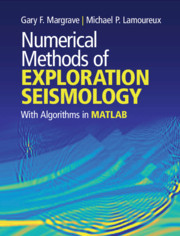Description
Numerical Methods of Exploration Seismology
With Algorithms in MATLAB®
Authors: Margrave Gary F., Lamoureux Michael P.
Technical guide to the theory and practice of seismic data processing with MATLAB algorithms for advanced students, researchers and professionals.
Language: English
Subject for Numerical Methods of Exploration Seismology:
Approximative price 86.49 €
In Print (Delivery period: 14 days).
Add to cart
Publication date: 01-2019
450 p. · 19.2x25.3 cm · Hardback
450 p. · 19.2x25.3 cm · Hardback
Description
/li>Contents
/li>Biography
/li>
Exploration seismology uses seismic imaging to form detailed images of the Earth's interior, enabling the location of likely petroleum targets. Due to the size of seismic datasets, sophisticated numerical algorithms are required. This book provides a technical guide to the essential algorithms and computational aspects of data processing, covering the theory and methods of seismic imaging. The first part introduces an extensive online library of MATLAB® seismic data processing codes maintained by the CREWES project at the University of Calgary. Later chapters then focus on digital signal theory and relevant aspects of wave propagation and seismic modelling, followed by deconvolution and seismic migration methods. Presenting a rigorous explanation of how to construct seismic images, it provides readers with practical tools and codes to pursue research projects and analyses. It is ideal for advanced students and researchers in applied geophysics, and for practicing exploration geoscientists in the oil and gas industry.
Preface; 1. Introduction to MATLAB and seismic data; 2. Signal theory – continuous; 3. Signal theory – discrete; 4. Wave propagation and seismic modelling; 5. Deconvolution – the estimation of reflectivity; 6. Velocity measures and ray tracing; 7. Elementary migration methods; References; Index.
Gary F. Margrave has extensive experience with seismic data in both the corporate and academic worlds. His career began with fifteen years at Chevron, before twenty years as a Professor of Geophysics at the University of Calgary, where he taught courses on which this book is based. He then spent two years as Senior Geophysical Advisor at Devon Energy. He is now retired but still pursuing a vigorous research program.
Michael P. Lamoureux is a Professor of Mathematics at the University of Calgary, with a research focus on functional analysis and its application to physics, signal processing, and imaging. He has a keen interest in developing advanced mathematical methods for use in real industrial settings.
Michael P. Lamoureux is a Professor of Mathematics at the University of Calgary, with a research focus on functional analysis and its application to physics, signal processing, and imaging. He has a keen interest in developing advanced mathematical methods for use in real industrial settings.
© 2024 LAVOISIER S.A.S.




